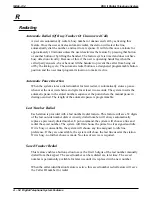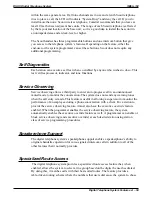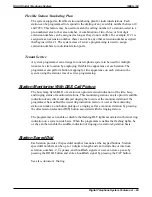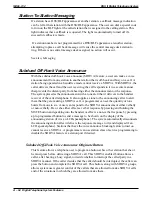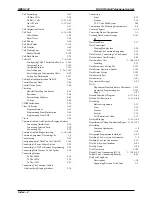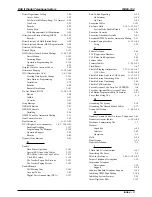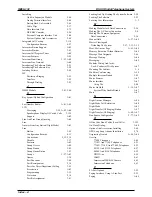
Example 1: Allow station port 10 to originate SOHVA messages to all stations in the
system and allow those stations the ability to originate SOHVA messages to each other
but not to station port 10. Assign group 1 to station port 10 and assign group 2 to all
other station ports.
Example 2: Allow station ports 14 and 15 to receive and originate SOHVA calls
between each other but deny both receive and originate capability from any other system
stations. Assign group 8 to both station port 14 and station port 15. Do not assign group 8
to any other station port but be sure that all station ports have a group assigned to them.
The programmer assigns SOHVA groups using the station class of service programming
procedure.
Subdued Ringing
When a station is busy on a call and another call comes to the same station, the system
will automatically subdue the ringing of the second call to a lower volume.
See also, Ringing.
System Alarm Reports
The programmer can arrange the system to report alarm and status conditions to a
particular station or stations that he or she has enabled to receive them. The alarm
receiving station must be an LCD speakerphone. When a station is enabled to receive
alarms, its user can take appropriate action to cause the alarm codes to be presented on
the LCD display. A programmer must use both system and station class of service
programming to enable this feature.
System Speed Dial
The system provides 99 system-wide speed dial numbers. The system speed dial numbers
can be up to thirty-two digits in length, and can include numbers, #,
✳
, pauses, and
hookflash signals. The attendant programs the system speed dial numbers and names at
station 10 or 12 for use at every station in the system. No class of service programming is
required.
See also, Automatic Dialing.
IMI66–132
DSU II Digital Telephone System
A – 66 Digital Telephone System Features
Summary of Contents for DSU II
Page 31: ......



